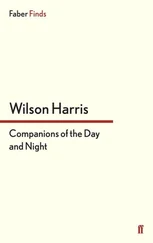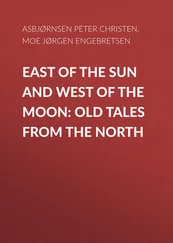1 ...8 9 10 12 13 14 ...50 The lands of the Near East – including Syria and the Lebanon, Eastern Turkey, Iraq, Israel and the Palestinian territories, Jordan and parts of Saudi Arabia – can no longer be considered by ancient historians as some sort of exotic “appendix” to the classical world. Their exploration, gathering speed throughout the last century, is continuing to produce major results. The findings of the legendary missions from what is now long ago will forever form the foundations of our current research: the excavations and surveys conducted under the French Mandate (Gelin 2002), by leading names such as Daniel Schlumberger, Henri Seyrig, or the Russian-born Georges Tchalenko; the evocative campaigns by German scholars (Wilhelm 1998) such as Walter Andrae, Otto Puchstein, or Theodor Wiegand; the Princeton archaeological expeditions to Syria of 1904–1905 and 1909; and the discoveries made at Dura-Europos by the joint mission of Yale University and the Académie des Inscriptions et Belles-Lettres in Paris, under the scientific co-directorship of Franz Cumont and, especially, Mikhaïl Rostovtzeff. As one of the longest running series of annual campaigns special mention may also be made of the Polish mission at Palmyra, commenced by Kazimierz Michałowski in the late 1950s and led by Michał Gawlikowski from 1973 until the outbreak of the recent civil war.
In the last decennia of the twentieth century and at the beginning of the twenty-first, a number of influential syntheses have opened up the field and brought the subject area toward the mainstream of ancient history: Glen Bowersock’s authoritative study on the royal lands of Nabataea turned provincia Arabia (Bowersock 1983; cf. id. 1994 for collected essays); Benjamin Isaac’s groundbreaking study of the nature and function of the Near Eastern limes (Isaac 1992; cf. id. 1998, 2017 for collected essays); Fergus Millar’s magnum opus , unquestionably the main catalyst thanks to which the field of Roman Near Eastern studies has come of age (Millar 1993; cf. id. 2006 for collected essays; the book inspired many excellent reviews of which Kennedy 1999 deserves to be singled out); Maurice Sartre’s massive volume which was the first to include both the Hellenistic and the Roman periods (Sartre 2001; cf. id. 2005 for the English translation of the Roman half; id. 1991 for an earlier study which also included Egypt; id. 2014 for collected essays); Warwick Balls’s provocative study of the region that takes direct aim at Millar’s approach, is based on an interpretation of architectural remains and postulates strong Near Eastern influences on the Roman Empire as a whole (Ball 2000; id. 2016 for a new edition; cf. Millar 2000 for a critical though fair and balanced response); Kevin Butcher’s study of the region which goes up to the early Islamic period and adds a more archaeological perspective (Butcher 2003a; cf. Sommer 2005b for an instructive review); Michael Sommer’s analysis of the steppe frontier as a zone of cultural exchange in which he deeply engages with theory (Sommer 2005a; id. 2018 for a new edition; cf. Yon 2006 for a constructive review); and Nathanael Andrade’s essential contribution to the debate on how to analyse the multifarious expressions of “Greekness” in the Near East (Andrade 2013). Within the field of Hellenistic and, notably, Roman Near Eastern studies thus created, an avalanche of scholarship has appeared which is reflected in the bibliographies on which the chapters in this book are based. These manifold and diverse publications have allowed the Hellenistic and Roman Near East to be identified as a valid subject for undergraduate teaching in Classics and Ancient History Departments. But the civilizations of the Levantine region in the six centuries between Alexander the Great and the beginning of Late Antiquity have not, until now, made it into a series of handbooks or companions on the ancient world. The individual chapters in this volume go to show just how badly needed they are and it is to be hoped that they will further facilitate the integration of the Hellenistic and Roman Near East into the teaching canon.
According to its nature, Blackwell’s Companion to the Hellenistic and Roman Near East will function as a reference work which cannot of course claim comprehensiveness. Neither does it aim at definitiveness; it rather makes clear the state of knowledge at present, pays attention to the imbalance in spread of evidence in general and to the nature of the sources bearing on specific questions and issues in particular, and points toward possible directions for further exploration. No doubt other editors would have chosen to lay accents slightly differently in their choice of chapters, but the current division of this volume adheres to general usefulness and accessibility in terms of the teaching of the subject matter, while also responding to some of the most exciting developments in the study of the Hellenistic and Roman Near East. Following this introduction and a historical overview ( Chapter 2), there are three parts, subdivided into thirty-six chapters: part I treats the main textual and a variety of non-textual sources; part II deals with selected regions, places, and peoples; part III is thematically subdivided. Some overlap has, quite naturally, been unavoidable, but rather than being mere repetitiveness this takes the form of variegated approaches to the relevant sources, places, and themes. Some chapters focus more on the earlier period, others more on the later centuries. Some places (e.g. Hierapolis) or regions (e.g. the Hauran) will be touched upon in chapters in parts I or III rather than having a chapter devoted to them in part II.
The Hellenistic and Roman Near East
Geographically defined, the Near East comprised of the lands situated between the Mediterranean in the west (bordered by the Phoenician and Palestinian coastal strips), the Taurus mountains in the north (with the hill countries of Commagene and Osrhoene opening up into the northern sections of Syria and Mesopotamia), the “land between the rivers” Euphrates and Tigris in the east, and the more sparsely populated steppe zone stretching into the Arabian peninsula in the south. Intersected by the great rivers and their tributaries, the various sub-regions were very different from each other as far as topography and geology are concerned.
Taken as a whole, these lands had always been – as already emphasized by the great Russian scholar Mikhaïl Rostovtzeff in a classic paper (1935a; see id. 1941b) – a transit region, a meeting-place for the three great civilizations of the ancient world: the Mesopotamian, the Egyptian, and the Aegean. At the same time, the enormous zone beyond Anatolia and the Mediterranean Sea was a region of great geographical and cultural diversity (see now Cameron 2019 on the relevant writings by the ancient geographers). Even if the geographical (and environmental) divisions cannot explain all the cultural variety, the fact that all sub-regions had their own, quite specific geological characteristics will have had some bearing on the cultural developments within them (for helpful overviews see the relevant chapters in different volumes of the Cambridge Ancient History , by Musti 1984; Kennedy 1996b; Sartre 2000, 2005b; and also the overview article by Rey-Coquais 1978).
The continuously shifting borders of the subsequent and overlapping imperial powers notwithstanding, the Near Eastern lands (at least in part) formed the heartland of the realms of the Seleucids and the Arsacids, and the latter’s successors the Sasanians. As for the Romans, in the centuries forming the prelude to the rearrangements under the tetrarchy, when the lands of the Near East came to form one of 12 new dioceses under the name “Oriens” (which also included Egypt and Libya), the region had undeniably grown into an integral part also of the Greco-Roman world. With the main enemy on its eastern frontier (see the collections of sources in Dodgeon and Lieu 1994; Dignas and Winter 2007), Rome concentrated many of its forces in the region and the percentage of legions stationed in the Near East grew substantially over the course of the principate (Isaac 1992; Kennedy 1996a; Gebhardt 2002; Mitford 2018). The army played a major role in processes of state formation and both legionaries and soldiers from the auxiliary cohorts often found themselves deeply engrained in the local societies in the vicinity of their camps (Pollard 2000; Stoll 2001; see Haynes 2013 on the auxilia ; James 2019 for a case study of the best-known base of any garrison in the Near East). Emperors, and with them the imperial court, spent more and more time in the Levantine provinces, also when not campaigning against the Parthians or later the neo-Persians. And perhaps most significantly in the long run, the Near East is the region that formed the cradle of the three great monotheistic world religions of today.
Читать дальше












